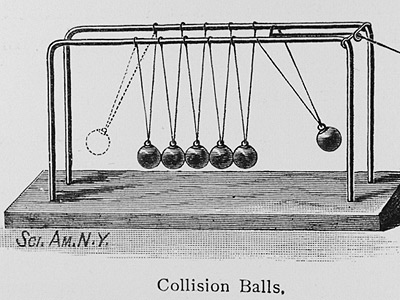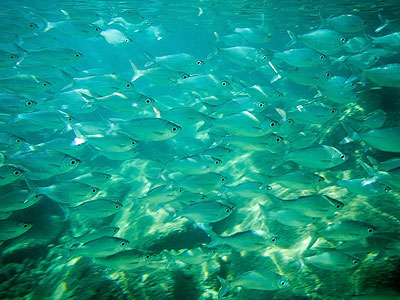How do animals make sounds without air, or without a mouth? First let’s understand what sound is.
Sound is actually the movement of physical energy through matter. It is created when something causes a “beat” of compression that spreads out through everything it touches, including the air or water, like the ripples of a pebble tossed in a lake.
To understand how sound moves through matter think of a set of pendulum balls suspended on a rack. If you swing a ball from one end it clacks onto the row of balls, but it doesn't bounce back out. Instead, the energy is transferred along the row until it arrives at the ball at the opposite end which swings away from the row using the energy transferred to it from dropping the first ball.
Of course, this end ball also drops back to clack onto the row, sending energy back to the first ball. A little bit of energy is lost each time it is passed from one end to the other. This back-and-forth “oscillation” will continue to repeat until there isn't enough energy to move the end balls.
This same thing happens in air when you clap your hands. Like the balls, the air does not move much, but the sound energy from your hands moves through it until, at the other end it reaches someone's ear drum.

PHOTO: Pendulum balls, "Newton's Cradle"

PHOTO: Schooling Fish, Vlad Karpinskiy, zlatkarp @ Flickr

